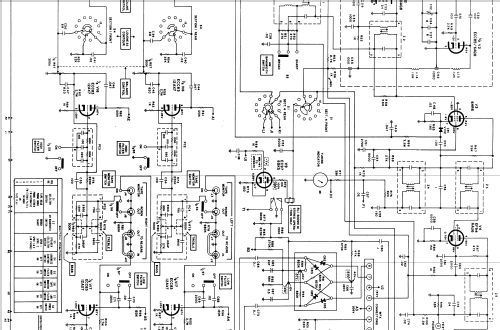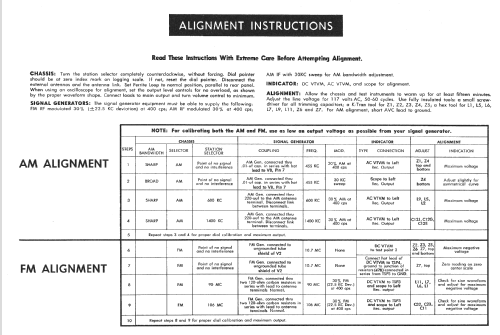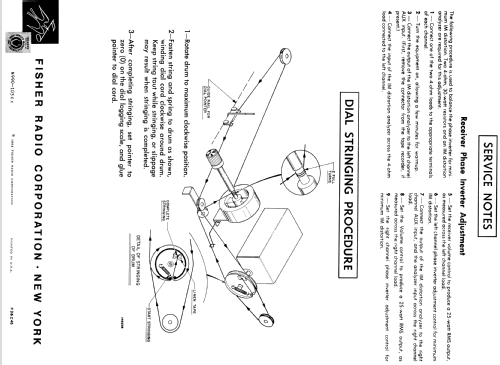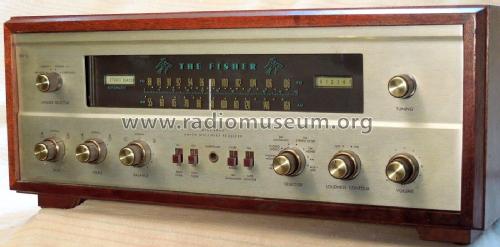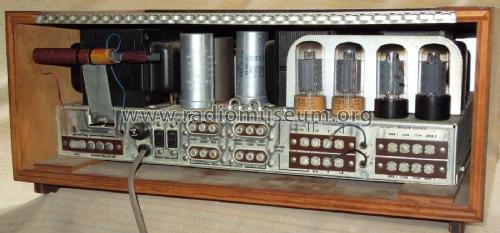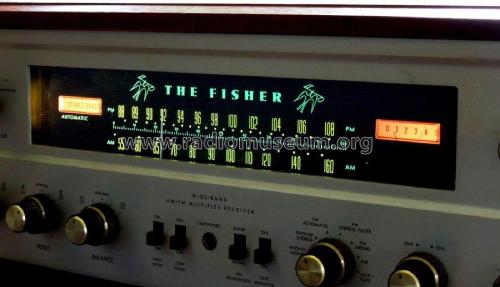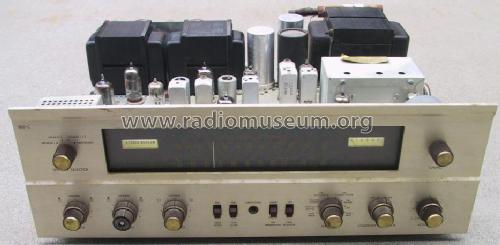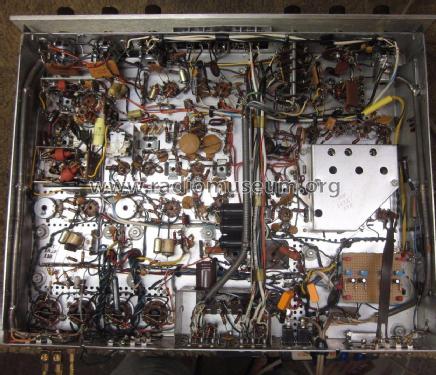- Pays
- Etats-Unis
- Fabricant / Marque
- Fisher Radio; New York (NY)
- Année
- 1963–1968
- Catégorie
- Radio - ou tuner d'après la guerre 1939-45
- Radiomuseum.org ID
- 26710
Cliquez sur la vignette du schéma pour le demander en tant que document gratuit.
- No. de tubes
- 22
- Lampes / Tubes
- EC97 ECC85 6HR6 EF94 EF94 EF94 EF93 EK90 EC97 ECC83 ECC83 ECC83 ECC83 ECC83 7591 7591 7591 7591
- Principe général
- Super hétérodyne avec étage HF; FI/IF 455/10700 kHz
- Circuits accordés
- 7 Circuits MA (AM) 13 Circuits MF (FM)
- Gammes d'ondes
- PO et FM
- Tension / type courant
- Alimentation Courant Alternatif (CA) / 220 Volt
- Haut-parleur
- - Ce modèle nécessite des HP externes
- Puissance de sortie
- 60 W (75 W max.)
- Matière
- Boitier métallique
- De Radiomuseum.org
- Modèle: 800C - Fisher Radio; New York NY
- Forme
- Chassis (pour intégration dans meuble)
- Dimensions (LHP)
- 445 x 146 x 380 mm / 17.5 x 5.7 x 15 inch
- Remarques
- HiFi-Stereo-Tuner-Verstärker. Ausgangsleistung 2× 33 W (Sinus); Nußbaum-Gehäuse gegen Mehrpreis (120,- DM).
Vertrieb über ELAC. 4 ZF+3 Begrenzerstufen. Frequenzbereich: 20...20.000 Hz +/- 1 db. Brumm und Rauschen -85 db
- Poids net
- 17 kg / 37 lb 7.1 oz (37.445 lb)
- Prix de mise sur le marché
- 2,760.00 DM
- Source extérieure
- erb
- Source
- Handbuch VDRG 1966/1967
- D'autres Modèles
-
Vous pourrez trouver sous ce lien 593 modèles d'appareils, 506 avec des images et 205 avec des schémas.
Tous les appareils de Fisher Radio; New York (NY)
Contributions du forum pour ce modèle: Fisher Radio; New: 800C
Discussions: 1 | Publications: 1
The Fisher 800C is one of the best all-tube broadcast receivers I have ever owned. It is exceptionally sensitive with excellent selectivity and stereo performance. As such, this radio is my all-time favorite broadcast tube receiver. It's expensive on the collector market but it is worth it.
Fisher launched this 800C over their 500C for those customers who also demanded AM broadcast coverage. Which it does very well given the presence of an RF amplifier (EF93) before the mixer in the AM chain. The only thing I would have liked is the use of an EM84 tuning indicator instead of the moving coil meter that was used, but that is a matter of opinion.
The radio differs from its contemporary US or Japanese broadcast receivers of the time. When looking at the bottom of the chassis, one will see many European components are used, as well as typical European construction techniques. I do not know where the design was done but there must have been a strong European influence because to me, the insides appear much more like European broadcast radios than American radios of the time.
The diagrams on this site I scanned from the original Fisher service manual which I bought on eBay but I make it avaialbe to you for free. I scanned the manual in it's entirely in high resolution and as continuous diagrams. Unfortunately a scan like this requires too much server space. If you want a copy of the original scan, please email me at fisher800c[A*T]gmail.com
Loek d'Hont, 18.Jun.09

